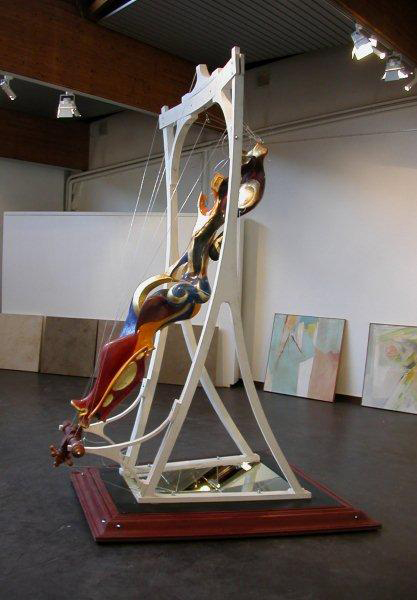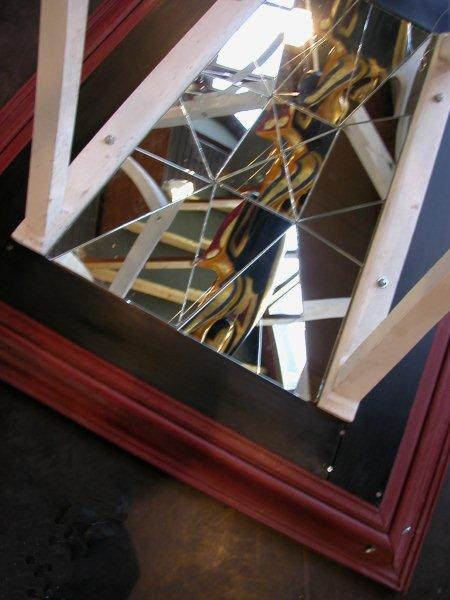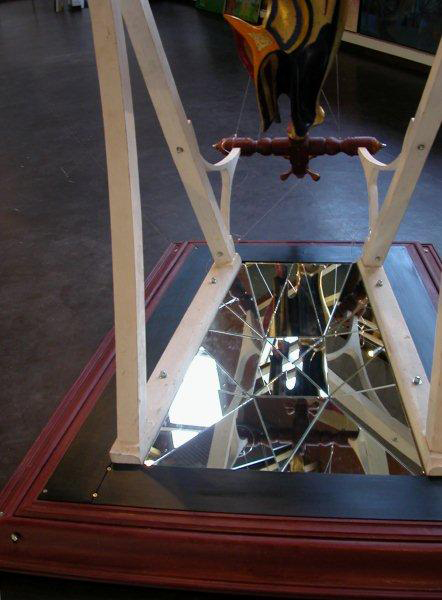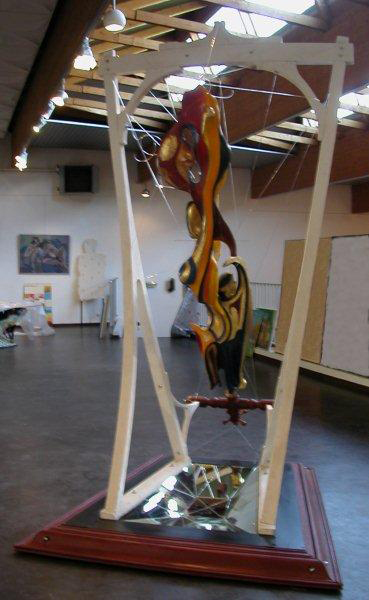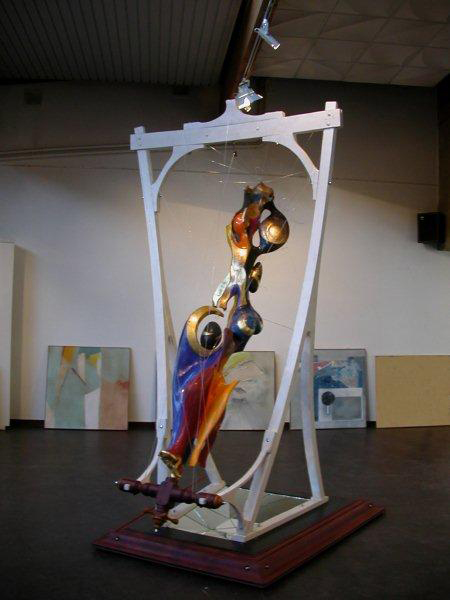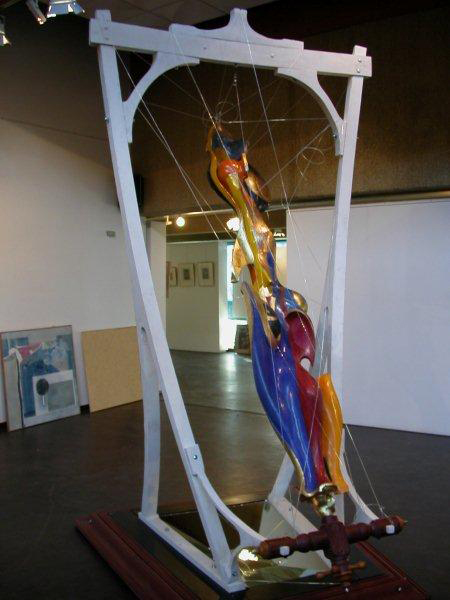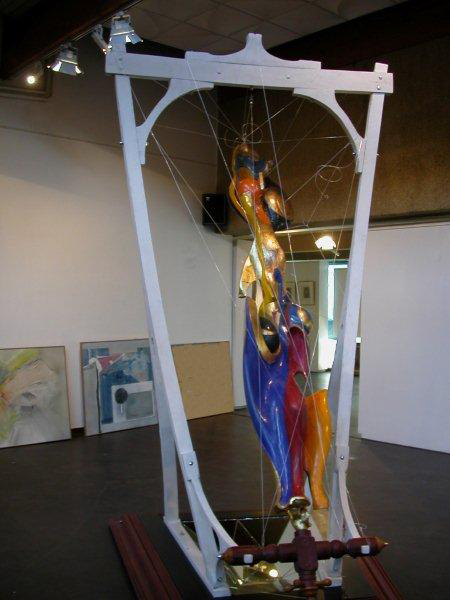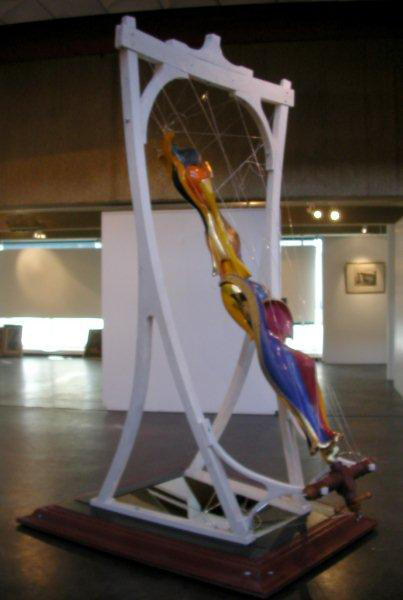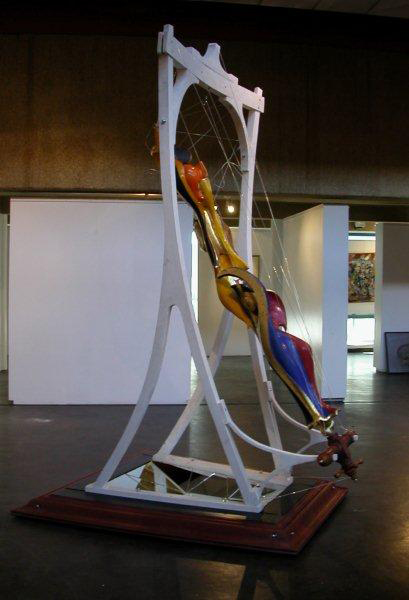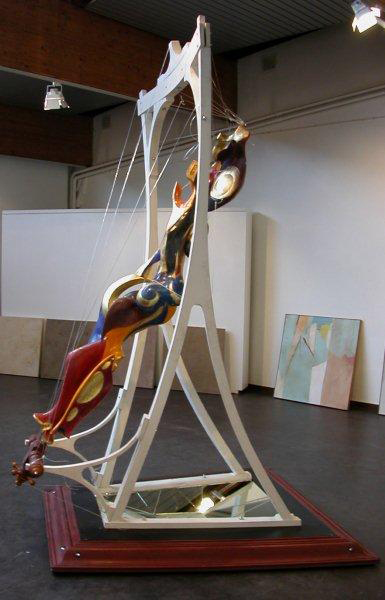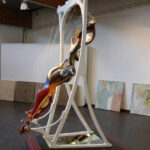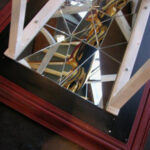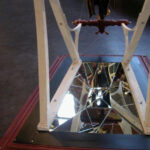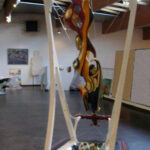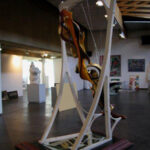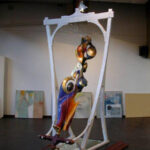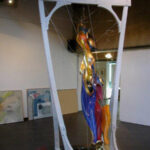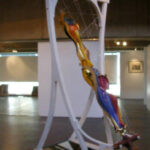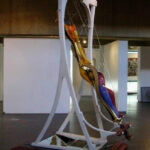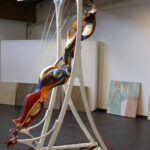Materials :
– Socle Bois de peuplier et pichpin- stuc
– Bois tilleul
– pictorial layer (natural pigments and gold leaves)
– Primers : : (rabbit’s glue and chalk powder)
– Tubes aciers
– Fils nylon- miroirs
Pièce exposée à JANNAH HOTELS & RESORTS Easrtern Mangroves UAE
POLYCHROMIC WOODS SERIES
This serie started from a reflection in between two closed and complementary disciplines : the sculpture and the painting.
The painting is usally understand and for good reasons and particularly through the color, as more abstract and cultural, belonging to a secondary order; while the sculpture, in the volumeapproach, more tactile, would rather belong to a primary order. Howeverthe concrete of the gesture is present in the two disciplines although the mallet and the paintbrush seems to be distant. We understand easyhow the abstraction appear in te color's management, but then it's maybe not so evident, it heads in the spatial organization relative to the volume.
These disciplines are neighbor since an ancient time, from the antiquity wher we used to coat with colors the statues made of white Pôros marble, through ours cathedrals, which were polychromatic since the gate to the inside statuary pieces, without to forget the high baroque epoch where abounded occuring in the same time these two disciplines. There is only in a period going since 1850 to the 1960, which was been really grey. Since this date and to now, was reinvent the color associated to the volume; but however, this one tinted or tints useful an design objects without shade, usually caste. The actually Art report it a lot as its function reflects the contemporaneity.
Those considerations forgotten my viewpoint is more ordinary, in the way where I'm not abble to find categorically, an answer at these interrogations:
- What happen in this alchemy, where the expressions of the two mixed arts enchant ouselves?
- Quid of what hold ourselves, is it here the colored oppositions, is it ther more the organization of the volumes?
So I wished to experiment, and let a same hand objecttively put the things : I get the intuition that an approached answer need to be deducted from these humbles experiments.
A methodology has prevailed in this long series of polychromic woods (starting from small formats to bigger ones which needed separated *bases, and consequently a specifically work has been conducted around them), so I got to make choices through the grammar and the vocabulary outside of the ground developed idea :
- About the color and even for the wood's form, I choose old epoch baroque style codes.
- About the figuration it's been oriented to an anthropomorphic order, with a look to the female gender and the maternity.
- I let a large spontaneity space to the nascent forms and colors, having for only prnciple the objectivity putting the colors in away of natural partitions, limited by plans sections in the space, or in the drawing partitions into curve plans prepared by the carving fact.
-*The great wood's bases were very important and indissociable of the oeuvres theirselves; I thought them to be interchangeable in order to exhibit the pieces in vertically, leaning or horizontally position and so to get a variability of expression following the different exhibits. The baroque style joins to the base too, but with an actual implication like the use of the nylon strings, relaying the transparence from the mirrors and carving the space geometrically and so to be in counterpoint with the curves of the sculptures.
The perspectives of this series are vast, the ideas are pretty numerous and follow their curencies, the joyfulnes is always there.
There is just and only to share it.
Pierre Kauffmann
